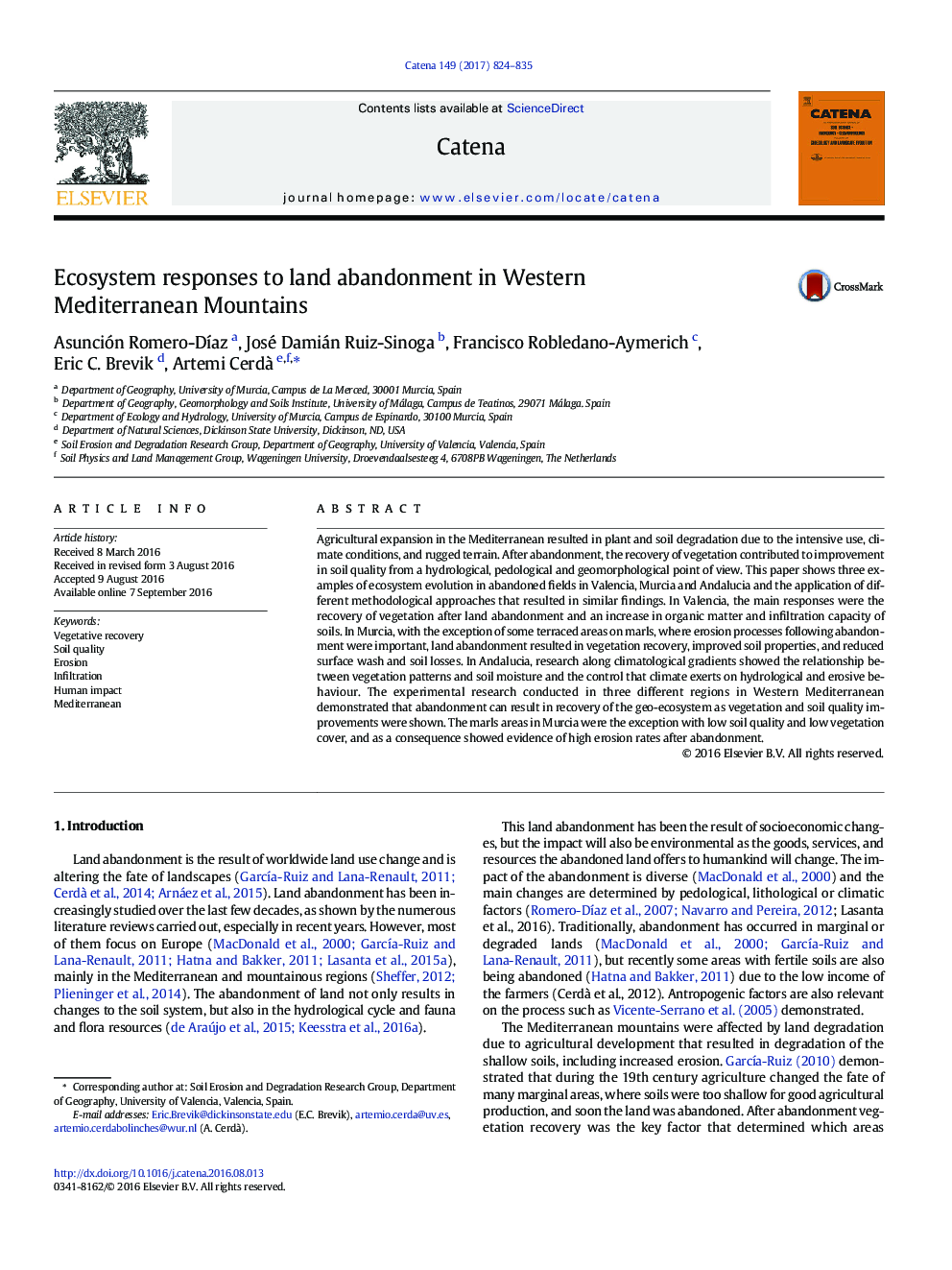| Article ID | Journal | Published Year | Pages | File Type |
|---|---|---|---|---|
| 5770112 | CATENA | 2017 | 12 Pages |
â¢Abandonment improves vegetation, soil quality and infiltration.â¢Marl soils showed low recovery, high erosion rates, and low organic matter.â¢We propose autonomous evolution of abandoned fields.â¢We suggest active restoration on marl sites.
Agricultural expansion in the Mediterranean resulted in plant and soil degradation due to the intensive use, climate conditions, and rugged terrain. After abandonment, the recovery of vegetation contributed to improvement in soil quality from a hydrological, pedological and geomorphological point of view. This paper shows three examples of ecosystem evolution in abandoned fields in Valencia, Murcia and Andalucia and the application of different methodological approaches that resulted in similar findings. In Valencia, the main responses were the recovery of vegetation after land abandonment and an increase in organic matter and infiltration capacity of soils. In Murcia, with the exception of some terraced areas on marls, where erosion processes following abandonment were important, land abandonment resulted in vegetation recovery, improved soil properties, and reduced surface wash and soil losses. In Andalucia, research along climatological gradients showed the relationship between vegetation patterns and soil moisture and the control that climate exerts on hydrological and erosive behaviour. The experimental research conducted in three different regions in Western Mediterranean demonstrated that abandonment can result in recovery of the geo-ecosystem as vegetation and soil quality improvements were shown. The marls areas in Murcia were the exception with low soil quality and low vegetation cover, and as a consequence showed evidence of high erosion rates after abandonment.
